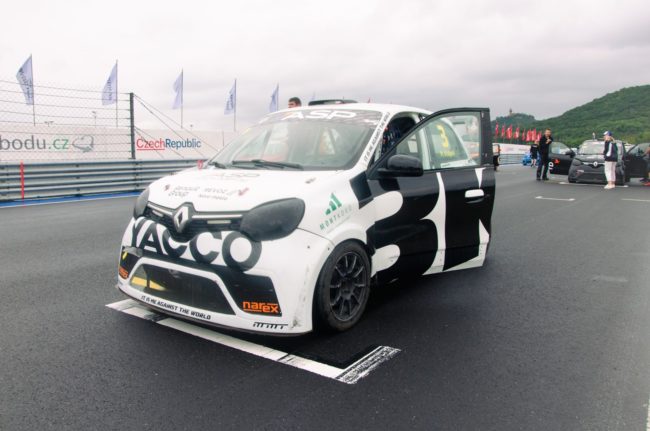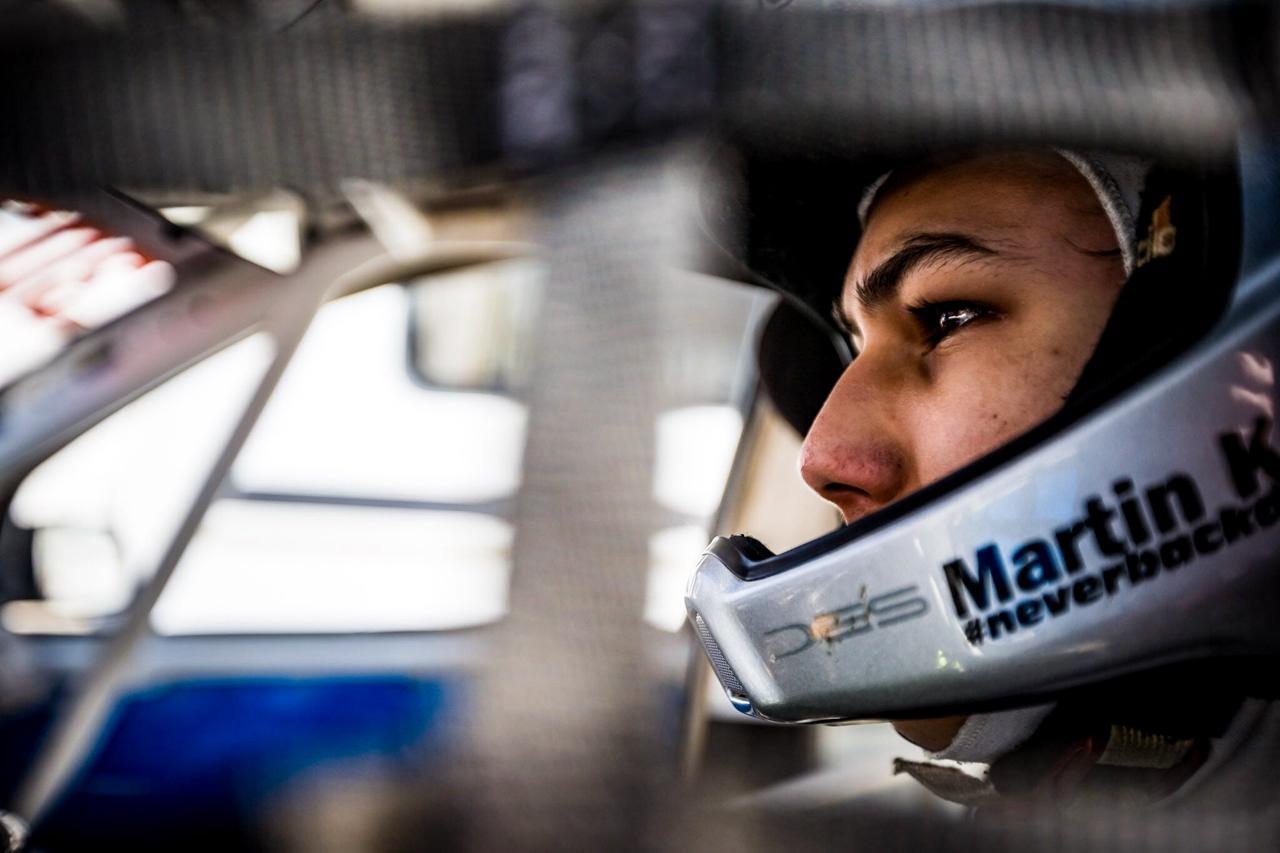Rallycross driver Martin Knápek won the F4 CEZ Academy earlier this year. After that, we saw him on the starting grid of the Twingo Cup and Clio Cup, where he definitively proved that his talent extends to tarmac racing as well.
Martin, after years in rallycross, this year you tried circuit racing for the first time. You started with the Renault Twingo in Most, where it was raining on your debut. You started from 11th place and fought your way up to third. How do you remember that debut?
I heard people talk about the Twingo Cup as a „baby NASCAR.“ At first, I didn’t quite understand it, but now I know what they meant. Because the car doesn’t have much power, you have to get right up behind the car in front, push each other along and work together with the other drivers. It’s technically called „bumper drafting.“ Honestly, that was the most memorable part for me. During the race weekend, we had technical problems with the car, which wasn’t performing as well as it should have. Unfortunately, we couldn’t fix the issues, so we just had to fight on. The qualifying was on a dry track, where the lack of power really showed, and I finished 11th. But for the first race, it started to rain heavily, and I was confident in the wet, even from the back. They say the key to being fast is doing what you’d do in a video game – but without crashing. That’s what I focused on. I worked with other drivers, used bumper drafting to my advantage, and squeezed every bit of performance out of the Twingo. In the end, it worked out. So, to answer your question, I have fond memories of the Twingo Cup.
Then, at the final event in Brno, you moved into the fourth-generation Renault Clio. How big a difference is there between racing a Twingo and a Clio?
The difference is huge. I’d say it’s like switching from a bicycle to a motorbike. The Clio is a proper race car. It’s much faster, more fun, and with paddle shifters behind the steering wheel, you feel like a pro. Another difference is moving from rear-wheel drive to front-wheel drive, which, thanks to rallycross, suits me better personally. But the truth is, the Twingo is much easier to drive. Compared to the Clio, it’s more forgiving and gives you more time to react to mistakes. Honestly, I’m glad I got to drive the Twingo before the Clio. I think it’s the perfect car to start with and to get a feel for how circuit racing works.
On your debut in Brno, you finished second in one race and then beat this year’s Clio Cup Trophy champion, Valter Nežič, in the next. How would you rate your debut with the Clio?
My main goal was simply to finish the race, and any good result would be a nice bonus. This approach stayed with me until qualifying, where I saw we’d be fighting for tenths of a second. I managed to win pole position in qualifying, but in the first race, I didn’t rev the engine enough at the start, and the car stalled. So, I had to fight my way back, and I ended up in second place. In the second race, I got a better start, and after a few battles, I fought my way into the lead, which I managed to hold. One new thing for me was managing the tyres during the race to ensure they lasted until the end.
Is Brno a challenging track for a debut in a new car? And how did you prepare?
Brno is probably the toughest track I’ve driven on. There are long, flowing corners where you have to be very precise, significant elevation changes, and the tyres suffer a lot due to the type of tarmac. Your tyres are pretty much overheated for the entire race. But Brno was an extreme challenge, and I’m glad I had the opportunity to tackle it. As for preparation, there wasn’t really any. I only got the offer to race on Wednesday, so the only thing I managed to do was a couple of laps in Assetto Corsa, watched some onboard videos before bed, and then the next day, I was already logging my first race kilometres in the Clio.

You’ve got plenty of experience in rallycross. Have you brought any habits from that which helped you on the tarmac?
Definitely. Rallycross may seem like a completely different discipline at first glance, but I’ve carried over a lot of habits. In rallycross, we also race on tracks like Slovakia Ring and Poznań, where a large part is on tarmac, and you follow a „racing line.“ You also learn to drive on the limit of your tyres, work with the car’s weight, and battle with other drivers – just not as aggressively. And since rallycross rarely takes place in ideal conditions, it really helped me when racing in the rain.
How would you compare the environments of rallycross and circuit racing? How do the demands on the driver, the team, and preparation differ?
The biggest difference was that in circuit racing, I had a rented car from the team, so there was no need to pack spare parts, tools, or worry about transporting the car. Even though rallycross is a sprint race, lasting just around five minutes, it’s incredibly aggressive and tough. Physically and mentally, it was more demanding for me. As a result, rallycross required more physical preparation. So far, I’ve only raced in circuit events in the ESET Cup, but I really like the friendly atmosphere in all the divisions I’ve raced in.
What are your plans for next season?
After trying circuit racing, I’d really like to continue and move up the ranks. I really like the TCR series or the GT categories, but as everyone knows, motorsport isn’t the cheapest, so we’ll see what offers come along and how the lottery numbers turn out! I’d like to give a big thanks to my main partners, YACCO, MONTKOVO, and NAREX, who’ve supported me this year as well.


COMMENTS